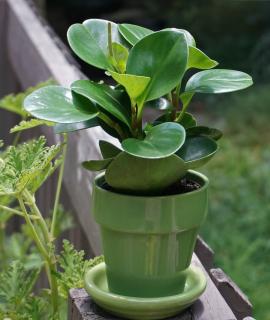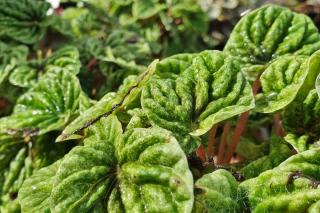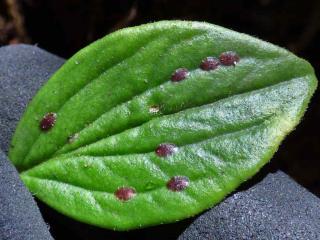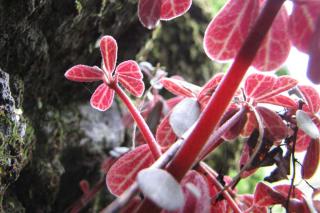

Peperomia is a tropical plant used indoors and in apartments.
Key Peperomia facts
Name – Peperomia
Family – Piperaceae
Type – perennial, indoor plant
Height – 10 inches (25 cm)
Exposure – well-lit
Soil: well-drained – Foliage: evergreen – Flowering: summer
It is very much appreciated for its foliage, which is extremely varied depending to the species and in every case amazingly ornamental.
 Peperomia has the particularity of loving being repotted at the end of winter.
Peperomia has the particularity of loving being repotted at the end of winter.
You can thus repot it after having purchased it if you realize the roots start sticking out from the bottom of the pot, and after that yearly at the end of winter.
Peperomia loves well-lit situations but abhors receiving the sun’s rays directly, especially in summer.
 Place your peperomia behind a window that would only be impacted by the sun’s rays early morning or late afternoon, with a thin protective veil.
Place your peperomia behind a window that would only be impacted by the sun’s rays early morning or late afternoon, with a thin protective veil.Termperature-wise, peperomia tolerates heated indoor apartments, but it may happen that its leaves drop off if the air is too dry (solve this problem here).
Temperatures mustn’t drop below 55 to 57°F (12 to 13°C).

Occasionally, you’ll have a few of the usual indoor plant fiends: scale (shown here), and red spider mites.
The natural environment of peperomia is the tropical forests of South America and it therefore requires high relative moisture all year round to develop well.
However, no need to water often: excessive watering could also kill it off. Excess water usually translates to leaf loss and ultimately death for your plant.

The photos we have here don’t necessarily present the actual varieties mentioned, it’s very possible that your own peperomia is very different from those shown.
There are green ones, mottled ones, waffle-textured ones, purple ones and even peperomia that are less or more densely leaved.
However, they all share common traits: a tropical origin traced back to South America and blooming that presents extended, long panicles.
Note also that the lifespan of a peperomia isn’t very long, and it grows relatively slowly.
But peperomia is, all in all, a simply beautiful indoor plant thanks to its varied and variegated (!) ornamental foliage.
Red spider mites are the most prevalent parasites on peperomia. To eradicate them, follow our advice on fighting red spider mites.
asking if the flowers of a peperomia should be cut off after blooming for a while and will it bloom again?
Hi Julie, yes you can go ahead and cut a spent blooming stalk off. Wait for the last flower on it to dry up and then cut the stem back as much as you can without cutting any leaf off. It’ll bloom again when conditions are right, sometimes it depends on how much daylight there is so it’s seasonal.